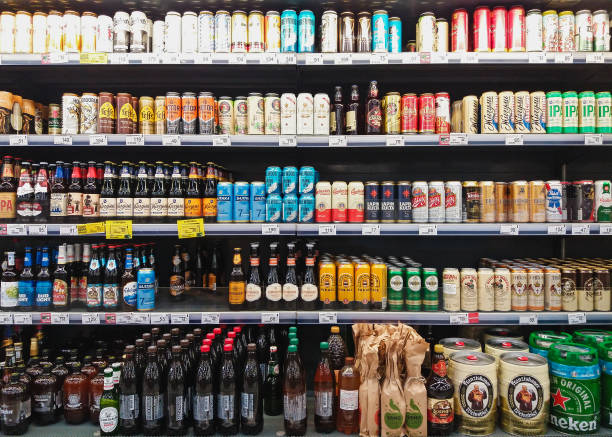When we think about home winemaking, we tend to think of grapes. You can start by visiting your local liquor shop. There are a variety of wines made from Pinot Noir and Zinfandel, as well as Cabernet, among other grapes.
What about wine made from other fruits than grapes? Home winemaking has evolved into a popular hobby. It is now possible to make wine from inexpensive fresh fruits.
Don’t mistake these wines for hooch from the back of a shed. You can now make incredible homemade fruit wines. Apricot wine rivals the complexity of any $20 Chardonnay. Berry wine goes just as well with prime rib as an expensive bottle of Merlot.
Making fruit wine is not more difficult than producing wines using fresh grapes. The process is similar, and all aspects are taken into consideration, just as they would be when making home wine.
Grape juice is well-suited to winemaking and requires little modification before fermentation. Wine grapes are available in many places, including California, that are naturally low-acid and high-sugar. They can be fermented without much change, but they still need to be checked.
It is easy to make adjustments when using fruits other than grapes.
- It is necessary to determine the amount of fruit per gallon.
- Test and adjust the amount of sugar available.
- The acidity of fruit juices should be measured and adjusted.
It is easy to do and takes very little time. It allows you to use any fruit that you like and make a wine of note.
How much fruit to use to make Fruit Wine
Home Wine Making Fruits are endless. This list of fruits is not complete. It includes strawberries, plums, and watermelons, as well as peaches and blackberries. Gooseberries, boysenberries. Grapefruits. Pears. Pineapples. Visit our winemaking recipe for a complete list of recipes.
You must begin the process of making home wine by evaluating your fruit. The fruit that is used to make the wine cannot be any better. It is important to pay attention to the quality of the fruit. You will reap the rewards of this by drinking consistently superior wines.
Molds and bruises are to be kept at a minimum. It is important to rinse the fruit before crushing it, just like you would if you were cooking with it. Fruits used to make wine at home should be ripe. Fruits that are picked too early tend to produce wines with a lack of character. A homemade pear-based wine, for example, will taste like apple wine unless you allow the pears to overripen slightly.
Homemade fruit wine is usually diluted before the winemaking process begins. This is because, unlike grape wines, which are made with pure grape juice. The primary reason is that certain fruits, like elderberries, have a strong flavor. Second, some fruits have too much acidity and produce wines that are sharp-tasting. Gooseberry and blueberry are two examples.
Apple wines, on the other hand, are made from pure apple juice. No water is added, and they require additional acid to be added. As you can see, there’s no rule of thumb to determine the amount of water or fruit to use to make a homemade wine.
The following list will give you a general idea of how much wine-making fruit you need to make 5 gallons of home fruit wine.
Quantity of Fruit to add to Wine
- Apricots are a delicious fruit. . . . . . . . . . . . . .18 lbs.
- Blackberries. . . . . . . . . . 15 lbs.
- Elderberries . . . . . . . . . . 10 lbs.
- Gooseberries. . . . . . . . . .11 lbs.
- Peaches . . . . . . . . . . . . 15 lbs.
- Pears. . . . . . . . . . . . . . . .22 lbs.
- Persimmons . . . . . . . . .15 lbs.
- Pineapple . . . . . . . . . . . . 14 lbs.
- Plums. . . . . . . . . . . . . . . 16 lbs.
- Raspberries . . . . . . . . . 15 lbs.
- Strawberries . . . . . . . . . . 16 lbs.
- Watermelon (Centers). .18 lbs.
These are only guidelines. There is no one correct amount of fruits to use when making home wine. You may prefer your fruit wine to be heavy, like a Dessert Wine, or light and crisp. If a recipe for home wine calls for 13 lbs of blueberries to make 5 gallons, you could increase that amount up to 18 kg or 20 lbs if you prefer your wine heavier, like Burgundy. Or, use 10 pounds if you prefer lighter-bodied Blush wines. It is not a good idea to deviate from this recipe when making fruit wines.
As with grape wines, the color and body of the wine will be intensified by leaving the pulp in the juice during the first few days of fermentation. A fruit’s personality is largely based on its pulp.
During the fermentation, the pulp is broken up, and a large part of it is liquefied using Pectic enzymes. The pulp releases the natural wine tannins and other goodness that are found in it. You can produce a fruit wine that has more body and character by using the pulp. You will also make a more stable wine, which will keep its color and flavor for longer.
Testing Sugars in Fruit Wine
When preparing fruit juices for wine-making at home, you need to consider the beginning sugar content.
When yeast consumes sugars available in your juice, it turns them into alcohol and CO2 gas.
You’ll get the alcohol you need if you subtract any sugars you didn’t ferment. All of the wine-making supplies listed can be purchased at Adventures in Homebrewing.
A winemaking hydrometer is your best friend. The hydrometer will help you determine the amount of sugar in your juice and how much alcohol it can produce. It also enables you to determine how much sugar you should add to your juice.
A winemaking hydrometer is a simple glass tube that weights one end. It floats. It is possible to measure the sugar content by watching how high or low it flows. The scale “Potential alcohol” is usually found on the hydrometers used for winemaking. You can read this scale before fermentation begins to determine if more sugar is needed.
We now come to the next question: “What kind of sugar should you use to adjust your juice’s level of sugar?” It’s a question about winemaking that most wineries avoid. They have the luxury to get all the sugars they need from the grape. There hasn’t really been any research on this subject. There have been many different opinions.
You should consider all the options. Different sugars have different characteristics. Fruit home wine can be made with cane sugar, rice sugar, or sugars like fructose. The choice of sugar depends on personal taste and the circumstances in which it will be used. If you’re not sure, use the cheapest option — corn or cane sugar. Feel free to experiment.
Honey can be a real challenge when making fruit wine at home. Payment is the term for fruit wines that have a small amount of honey added. Honey, in its most basic form, can add a “herbal finish” to homemade wine. The result can be spectacular when you use honey spun from a specific blossom. Raspberry juice and Raspberry Blossom spun honey can be combined to make an incredibly well-rounded fruit wine.
As an alternative to fresh fruit juice, you can use concentrated fruit juices. This will increase the wine’s body and fruitiness. If a lighter wine is what you want, then this method would not work. Concentrated fruit juice will also increase the acidity of the juice. This can be a good thing or a bad thing, depending on whether or not the juice requires the acid. This brings us to the next topic in our fruit wine-making series.
How to test and adjust acidity in Fruit Wine
Two distinct benefits come from having the right amount of tartaric in your wine. It will not only enhance the overall character and balance of the wine but will also help the fermentation process.
Acidity can vary dramatically from one fruit to another. Although you won’t pucker when eating bananas, they contain the same amount of acid as lime or raspberry. . . Only less of it. Add to that the fact that you will use different amounts of fruit for each gallon to make fruit wine, and it becomes clear that adjusting the acidity of your homemade fruit wine is essential.
You can check the acidity of your juice in two ways. The easiest and fastest way to test your juice’s acidity is by using pH strips. The strips are accurate enough for home winemakers. It is not the most precise method to measure acidity. The pH strips will test all acids, regardless of their tartness. You can sometimes get misleading readings when it comes to pH versus flavor.
Titration is the second most accurate method to determine a juice’s level of acidity. After a few minutes, you will be able to master the process. The winemaking titration kit is a tool that measures acid based on how it tastes.
A wine that is too acidic will taste sharp/sour/bitter. A wine that lacks acid will taste flat, bland, or lifeless. One of my customers said, “It tastes Kool-Aid.” After adjusting the acidity in your juice, it should taste naturally sweet.
You can buy them individually or blend them as an a href=”https://homebrewing.org/products/acid-blend-2-oz”>Acid Blend/a>. You can purchase them separately or as a Blend. This is the most common acid blend used for fruit home winemaking, and it is also what most recipes call for. These wine-making fruit acids are available in granulated forms that are easy to dissolve.
Fermenting Fruit Wine
After you’ve added the right amount of fruit and adjusted the sugar and acid levels, you will have a very similar juice to grape juice. The process of making home wine is very similar to making wine with grape juice. You can call the liquid you have prepared a “Must.” This is a fancy term winemakers use to describe a fluid that is fermenting or ready to ferment.
The fermentation process is not the subject of this article, and there are no special considerations for fruit wine in this region. You can ferment the must using wine-making yeast and wine-making nutrients, just like you would with grape wine. The seven easy steps of winemaking is a great overview of the process.
Making Final Adjustments to Fruit Wine
For me, getting the wine ready to be bottled is one of my favorite parts of making home wine. It is at this point that a homemade wine can become something special. Many home winemakers, including those who are very experienced, gloss over this process. Many home winemakers have the impression that they can’t control the outcome of their home wine once the process is completed. The truth is that nothing could be farther from the truth.
You can adjust the flavor of homemade fruit wines in a variety of ways. It takes time to understand what needs to be changed and why, but you will never learn if you don’t experiment.
You can sweeten fruit wine in small or large amounts. You can mix it with other fruit wines. You can adjust the final acidity to your taste. Spices such as cinnamon or ginger can be added. You can add wood chips to create a barrel-aged effect, enhance flavor, or enhance the body. You can fortify wine with Vodka and Grain Alcohol. It may seem like cheating, but if you ignore these options, you will only cheat yourself.
When making these adjustments, I strongly recommend that you “test small amounts.” If you are about to bottle a batch of 5 gallons, for example, remove a half gallon and try it out.
If you do not get the results that you desire, you can always try again. Blend it with the remaining 4 1/2 gallons, and then move on. You can repeat the process if you are happy with the results. This method is less likely to ruin your wine and is less intimidating for a beginner.
You can sweeten a fruity wine to your taste at the bottling phase. If everything went according to plan, the wine should have a dry bite. Garden fruits don’t do well when they are extremely dry, so adding a little sugar to the wine before bottling will help. A little sugar will improve the fruity flavor of your wine. When sweetening wine, you should also use a wine-making stabilizer like potassium sorbate. This will help to eliminate the possibility of re-fermentation within the bottles.




